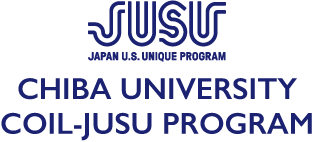Data Visualization
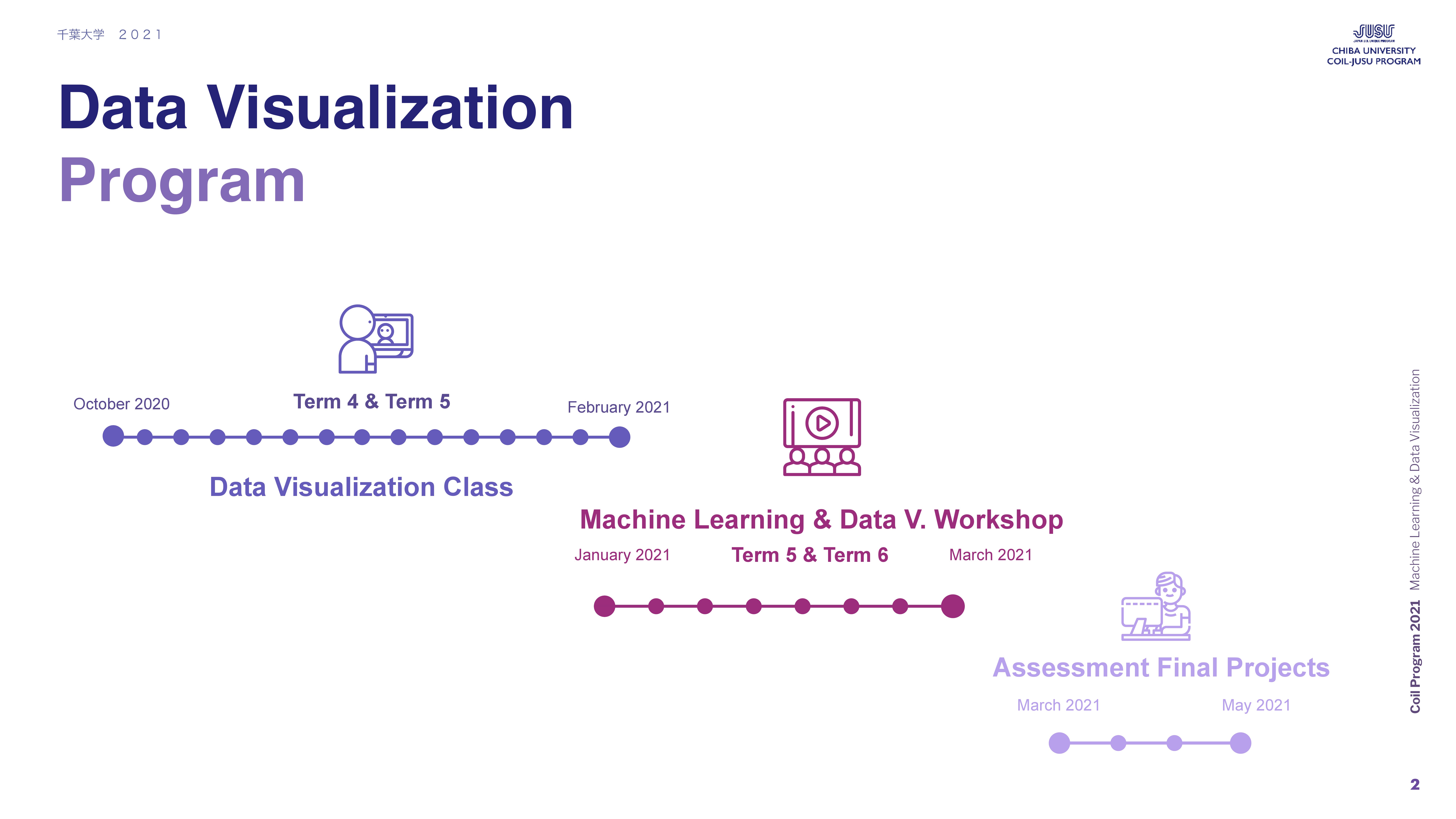
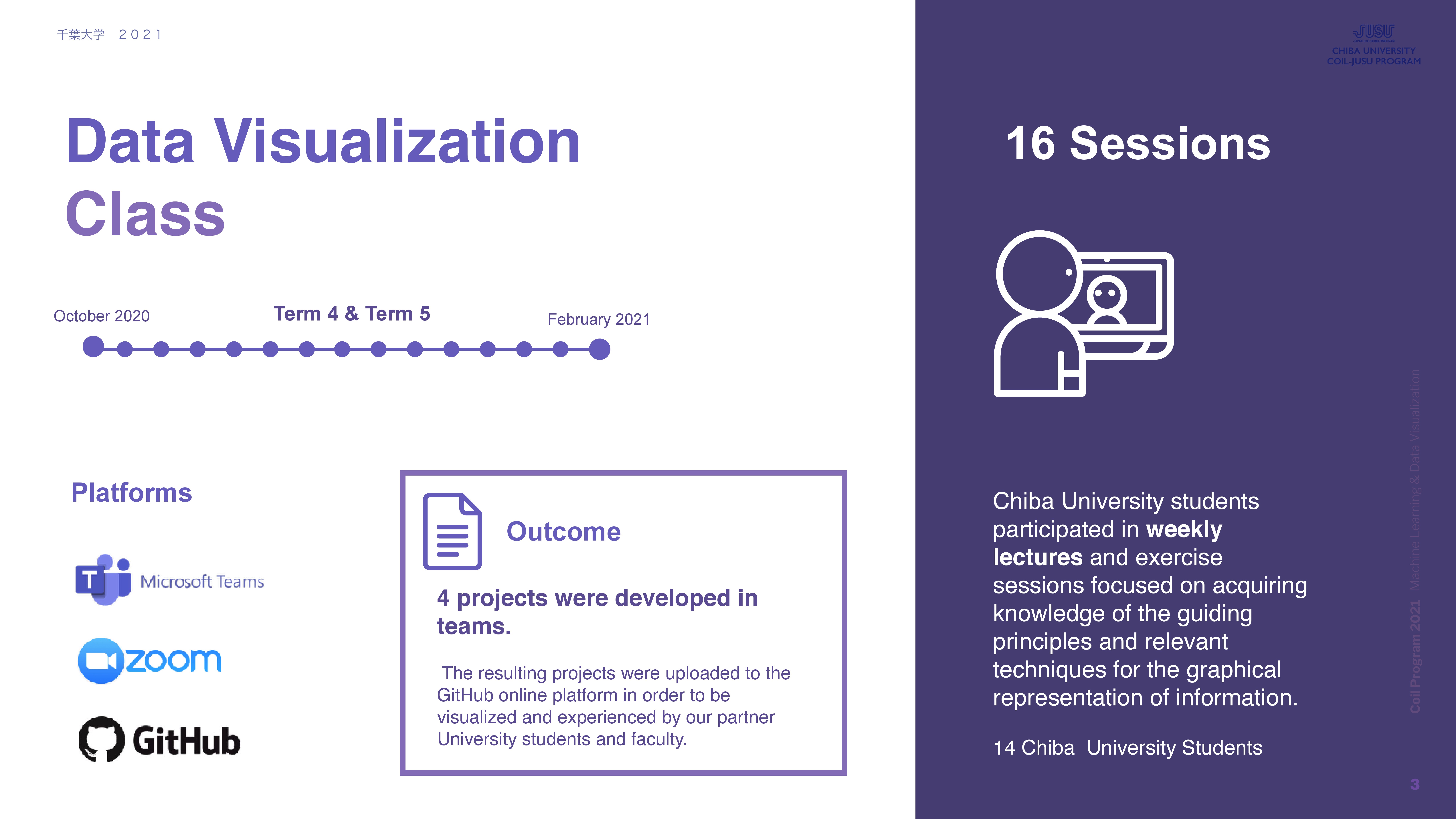
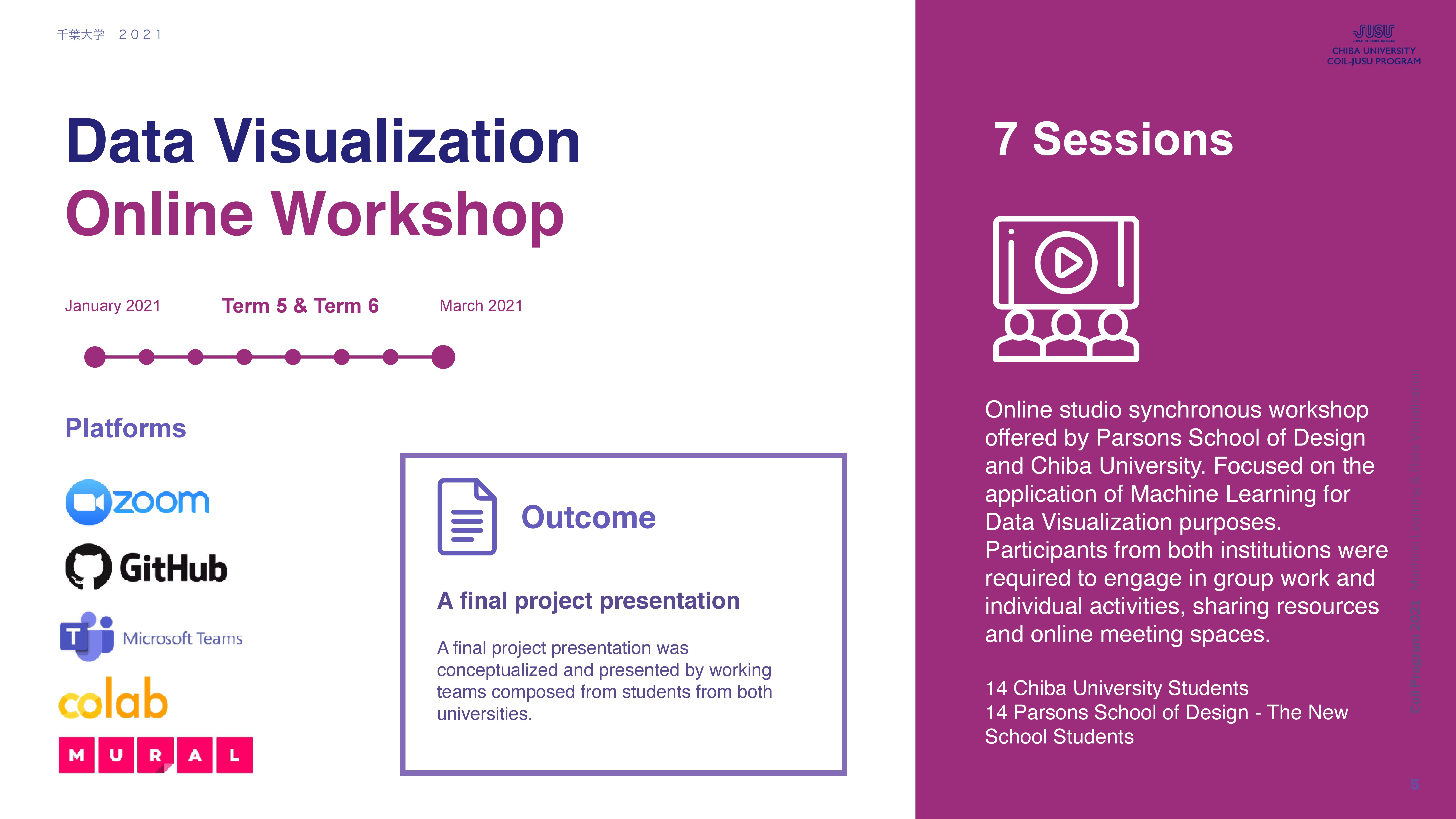
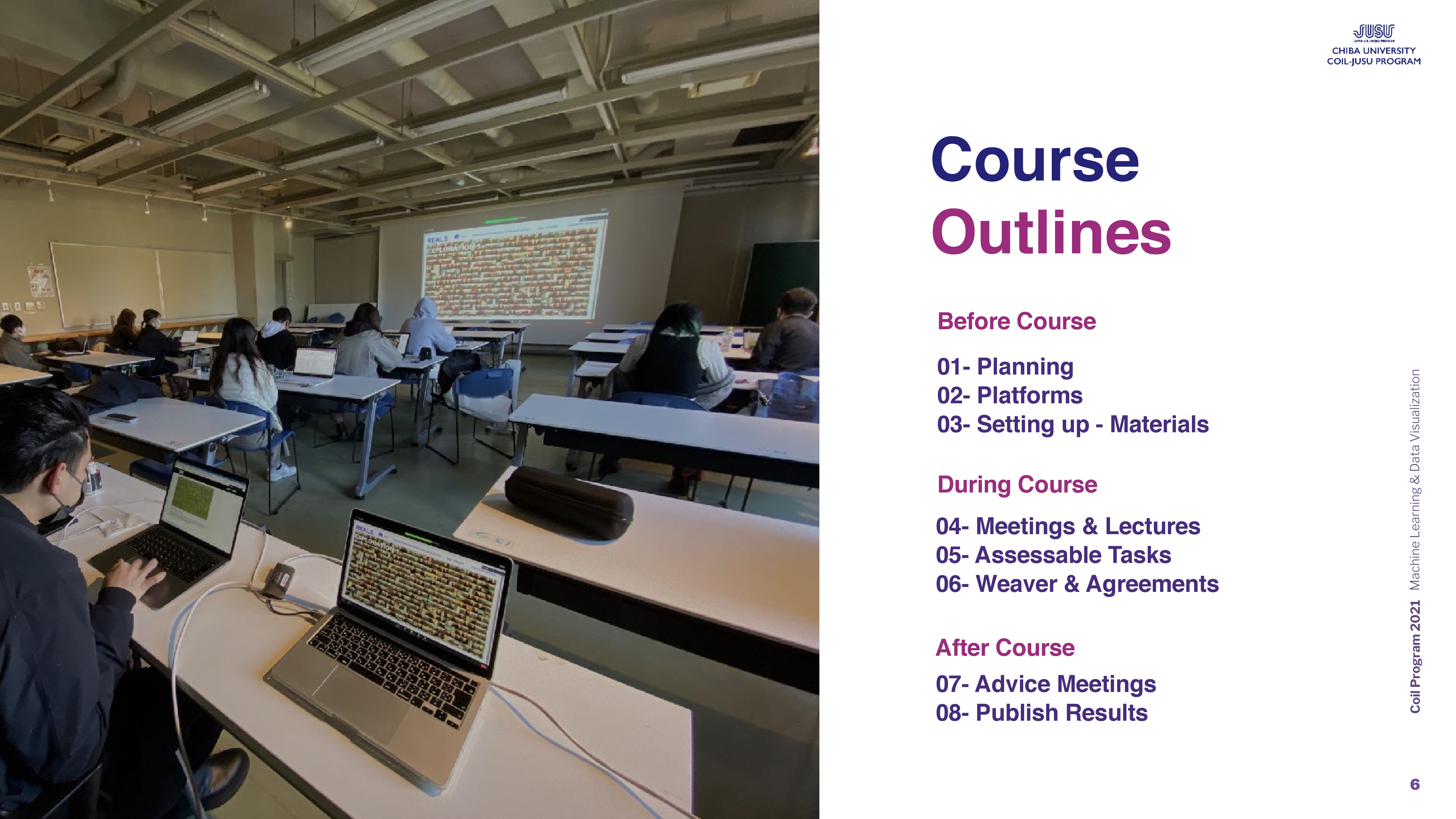
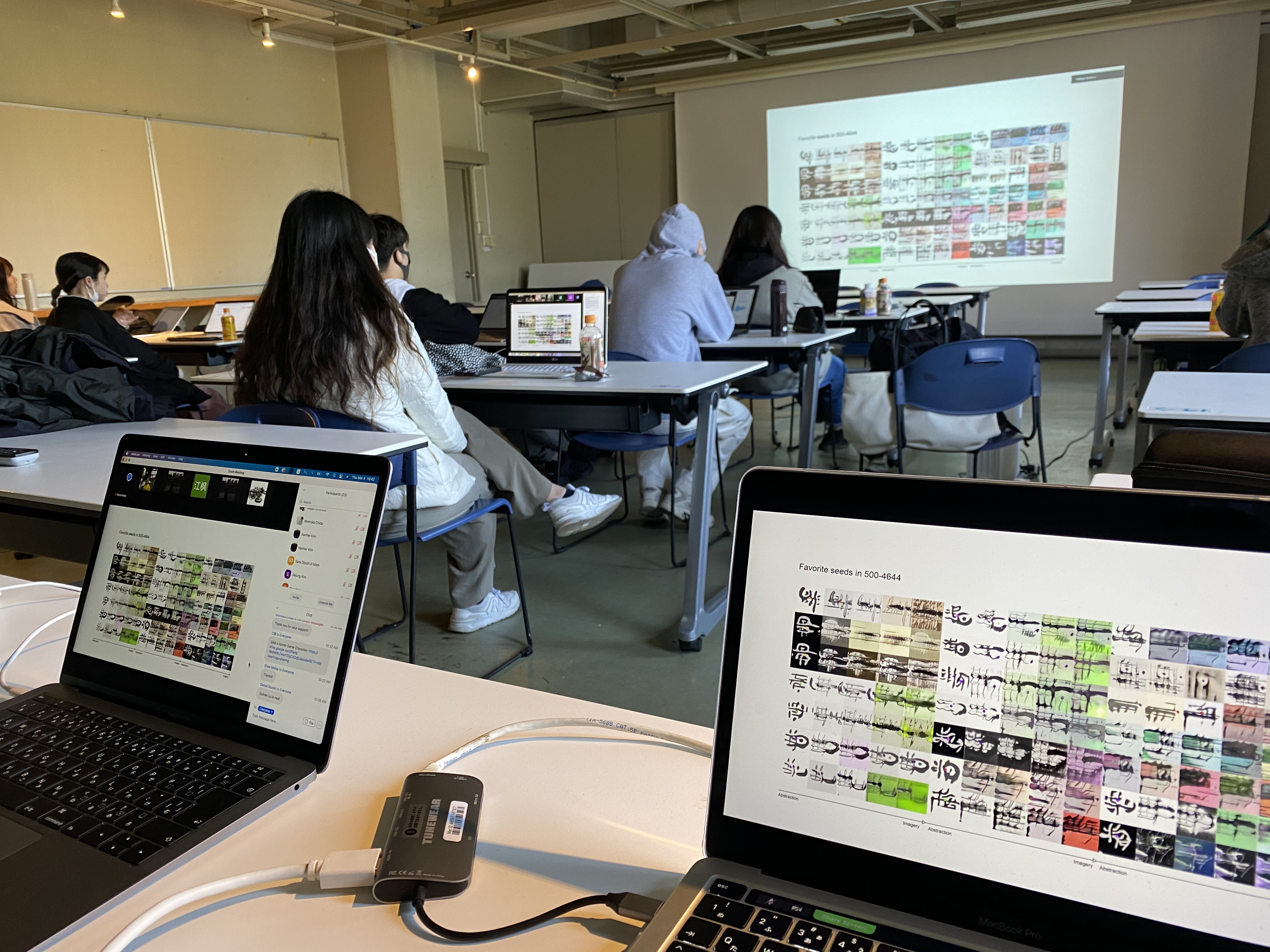
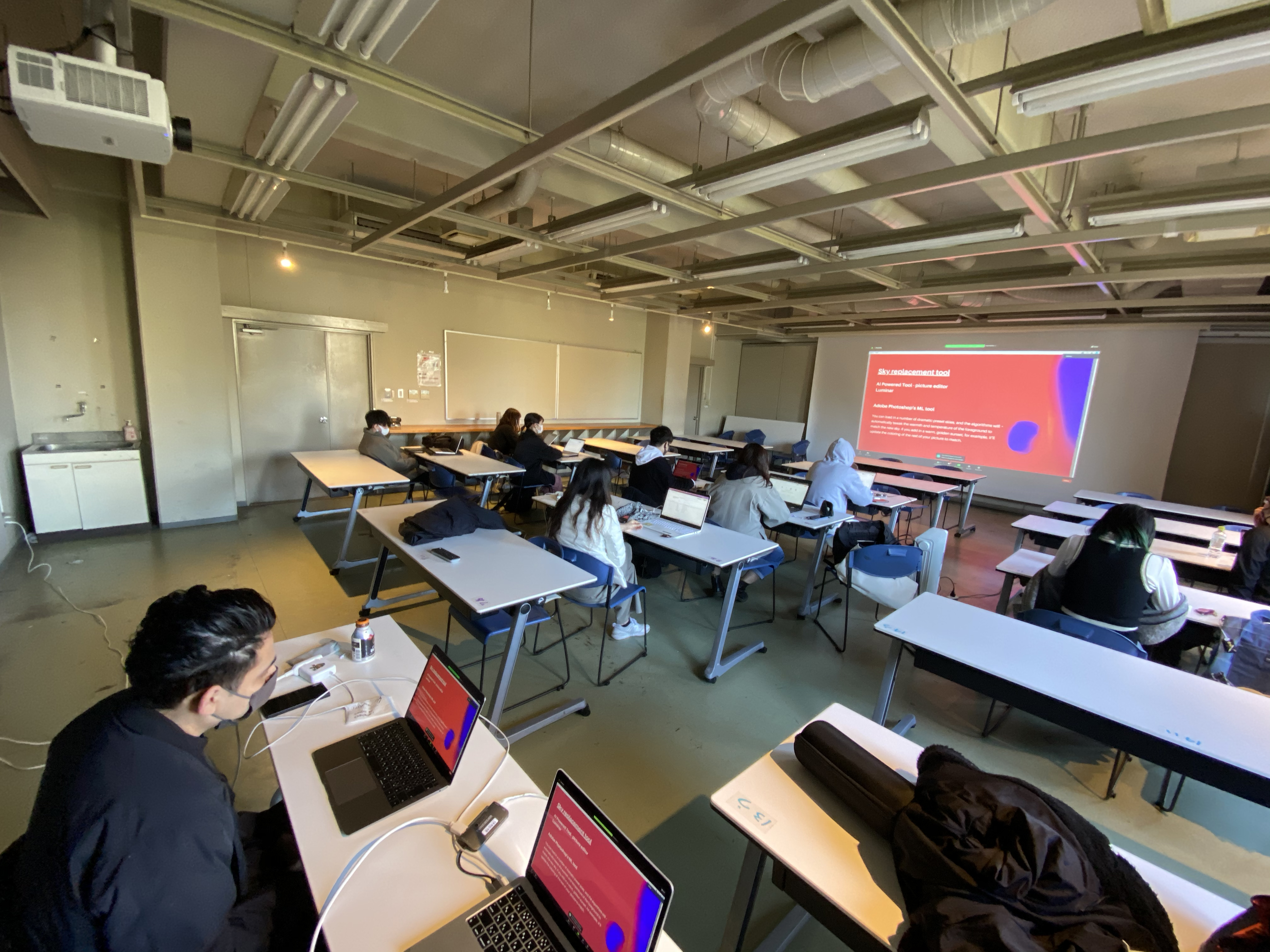
実施大学(学部)
Partner university (faculty)
千葉大学工学部・国際教養学部 ニュースクール大学
Faculty of Engineering, College of Liberal Arts and Sciences, Chiba University and The New School
授業日程
Class schedule
Term 4 & Term 5 (October 2020 - February 2021)
Term 5 & Term 6 (January 2021 - March 2021)
時差
Time difference
13時間
13 hours
授業目的
Class objectives
The course is focused on the design of graphical representations of data and information through the use of generative algorithms and unsupervised machine learning techniques, specifically Generative Adversarial Networks (GANs).
Weekly lectures provide an overview of Data visualization techniques as well as GAN principles and methodologies, followed by hands-on exercises that demonstrate the underlying computational techniques. Contextualized by reading assignments, a series of lectures by artists, designers, and engineers illustrates the variety and breadth of machine learning techniques in practice.
授業内容
Class content
Data Visualization Class (Term 4 & Term 5):
October 2020 - February 2021:
Chiba University students participated in weekly lectures and exercise sessions focused on acquiring knowledge of the guiding principles and relevant techniques for the graphical representation of information.
4 projects were developed in teams. The resulting projects were uploaded to the GitHub online platform in order to be visualized and experienced by our partner university students and faculty.
Machine Learning and Data Visualization Workshop (Term 5 & Term 6):
January 2021 - March 2021 (7 weekly meetings):
Online studio synchronous workshop offered by Parsons School of Design and Chiba University. Focused on the application of Machine Learning for Data Visualization purposes. Participants from both institutions were required to engage in group work and individual activities, sharing resources and online meeting spaces. Active contribution was required in various modalities, including group discussions, live and asynchronous online chats, and written reading responses. A final project presentation was conceptualized and presented by working teams composed from students from both universities.
授業実施形態
Class format
同期型および非同期型
Ssynchronous and asynchronous
使用ツール
Tools used
Teams, Zoom, Github, Miro
Two consecutive programs, one asynchronous class introducing Data Visualization concepts and projects with online shared results and resources. and one synchronous workshop with real-time interaction between Chiba University and The New School instructors and students introducing machine learning for data visualization.
By selecting a research topic that was relevant for faculty and students of both institutions, Students were able to engage in synchronous collaboration based on a joint research effort.
